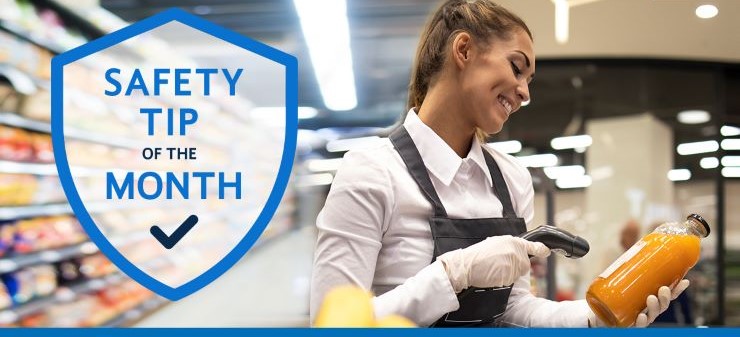To customers, it may seem like food magically appears on grocery store shelves, but grocery store workers know better. Behind the scenes, people are constantly at work: receiving shipments, stocking food on shelves, and rotating items. During these processes, there is a risk of spoilage and contamination. Grocery stores should be aware of food hazards when receiving, storing, rotating, and labeling items.
Damage and Contamination During Shipping
Packaging helps keep food safe from bacteria and other harmful substances, but damaged packing can lead to contamination. For instance, bags of frozen vegetables may rip open, cans may dent, and cardboard boxes may tear.
According to the USDA, cans with small dents should be fine. However, deep dents often have sharp points, which can mean the seam is damaged and bacteria may be able to enter the can. For this reason, you should discard deeply dented cans. In addition, the FDA advises customers to avoid consuming products with packaging that is open, torn, or damaged because this may be a sign of food tampering.
Even if food is safe to eat, consumers may feel uncomfortable purchasing food in damaged packaging – and justifiably so. They don’t know how the damage happened or whether the food is contaminated. It’s not worth taking any risks. By looking out for damage when you receive inventory and keeping damaged products off the shelves, you’ll avoid liability associated with food contamination as well as reputational damage.
Keeping Food at the Right Temperature
Let’s say you have a shipment of perishable food. After it’s unloaded from the truck, it should go directly into refrigerated storage. However, there’s a delay for some reason. Thirty minutes later, the food is finally where it should be – but how much damage has already been done?
Half an hour might not seem like much, but it can be more than enough time for harmful bacterial growth.
You need to keep food at the right temperature to avoid spoilage. Unfortunately, during the receiving and stocking process, delays can cause food temperatures to enter the danger zone, which the USDA says is between 40° F and 140° F. Cold food needs to be kept below this range and hot food above it. Otherwise, the number of bacteria present may double in as little as 20 minutes.
Customers Complain of Moldy Food
Mold is another problem that can occur during shipping and storage. Moist conditions, such as a leaking roof or humid storage space, can create an environment where mold thrives. Mold can affect foods that require refrigeration, such as meat and cheese, as well as foods that don’t, such as bread.
According to the USDA, some molds can cause allergic reactions and respiratory problems. Some molds can produce poisonous substances called mycotoxins that can make people sick. When there is mold on the surface of a food item, there will also be “roots” that run deeper, meaning scraping off dangerous mold does not make the food safe to eat.
Even if mold doesn’t make customers sick, it can still be off-putting and result in reputational harm. In one example of how customers might react to seeing mold, Newsweek says a TikTok video that claimed to show a grocery store selling moldy cakes went viral.
Rotten and Expired Products
When stock isn’t labeled and rotated properly, expired and even rotten food can fall through the cracks.
If you’ve ever purchased an item at a grocery store only to realize it expired days or even weeks ago, you understand how frustrating this is. Consumers expect the items on grocery store shelves to be fresh – and they may not check the expiration date until they open the packaging and see (or smell) that something is off.
In some cases, the food may have gone bad and customers who eat it may get sick. This can result in liability for the store. In many cases, customers won’t get sick, but they’ll still be upset. One angry consumer was frustrated enough to start a petition on Change.org, asking the Utah Department of Health and Food Safety to take steps to stop the selling of outdated, rotten, and moldy foods in supermarkets and restaurants.
Are You Following Grocery Store Best Practices?
Best practices can help your grocery store avoid food hazards, reduce liability, and protect its reputation. For more information, download our Food Receiving, Storage, Rotation, and Labeling Safety Tips.


